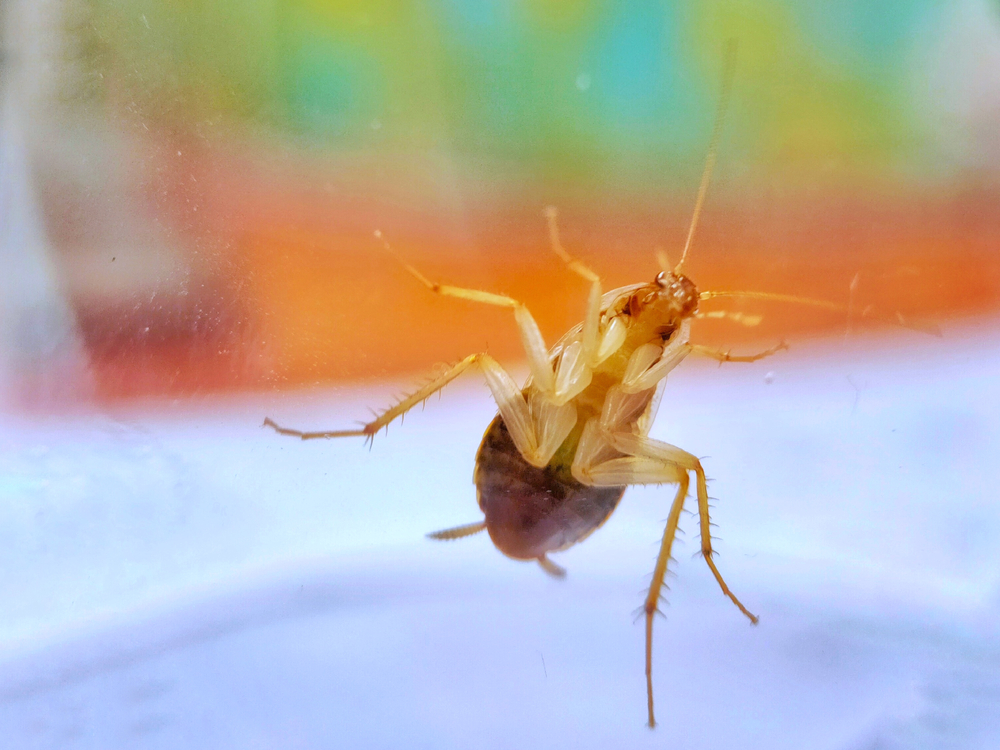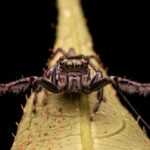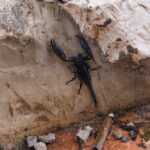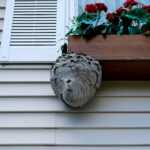Brown Banded Cockroach: Effective Control and Prevention Tips
Are you facing a brown-banded cockroach issue? Recognizable by the two light bands across their wings, these roaches are troublesome in homes. This article will guide you in identifying, controlling, and preventing these pests, helping you keep your home roach-free.
- Accurate identification of brown-banded cockroaches is crucial for effective management, characterized by their unique size and two light-colored bands.
- Understanding their habitat preferences, including warm and dry areas, is essential for control measures and preventing infestations.
- Effective pest control requires a combination of sanitation, structural modifications, and often professional services for serious infestations.
Identifying Brown-Banded Cockroaches
Accurate identification is the first step in managing a brown-banded cockroach infestation. Brown-banded cockroaches typically measure between 5/16 to 5/8 inch in length, making them smaller than many other common cockroach species. Their distinctive appearance, characterized by two light-colored bands across their wings and bodies, sets them apart from other roaches. These pronounced banding patterns are a key identifying feature and can help you spot them even if they’re darting quickly across a surface.
Adult male brown-banded cockroaches are approximately 1/2 inch in length and have fully developed wings that extend beyond their abdomen. In contrast, the female brown-banded cockroach is generally shorter and more robust, with wings that do not completely cover her abdomen. This difference in body shape and wing length can help distinguish between males and females when inspecting for these pests.
What truly sets brown-banded cockroaches apart from other cockroach species, such as the German cockroach (Blattella germanica), are the two broad brownish bands on their bodies and the absence of two dark stripes typical of German cockroaches. This feature is present in both adult and nymph stages, making it easier to identify them at any life stage. These bands are not only a visual cue but also a reminder of their unique habits and hiding preferences compared to other cockroaches.
Habitat Preferences and Common Hiding Places
Understanding the habitat preferences of brown-banded cockroaches is essential for effective control. These pests prefer warmer, drier areas, often making their homes in locations like upper cabinets, the upper walls of cabinets, and near appliance motors. Their affinity for heat means they’re frequently found lurking in protected and hidden dry locations that retain warmth, making detection challenging.
In addition to their preference for warm environments, brown-banded cockroaches are known to hide in less obvious places such as electronic equipment, behind picture frames, and inside furniture. These areas provide the warmth and protection they seek, allowing them to thrive unnoticed. Closets and pantries are also common hiding spots, particularly where food is accessible. Knowing these common hiding places can significantly improve your chances of locating and controlling these pests.
Life Cycle of Brown-Banded Cockroaches
The life cycle of brown-banded cockroaches involves three primary stages: egg, nymph, and adult. Knowledge of these stages is crucial for effective population management. The female brown-banded cockroach carries the egg cases (oothecae), which can contain around 18 eggs each. The egg stage duration varies from 37 to 103 days, influenced by temperature conditions. Under optimal conditions, an adult female can produce about 13 egg cases in her adult life, contributing significantly to the cockroach population.
Temperature plays a significant role in the duration of the life cycle, with completion times varying from 80 days at 33°C to 124 days at 25°C. After hatching, the nymphs go through 6 to 8 instars before reaching adulthood. This stage can vary in length depending on environmental conditions, but it is typically during this time that they are most vulnerable to control measures.
The life span of adult brown-banded cockroaches can vary, lasting about 60 days at lower temperatures. Knowledge of their life history aids in developing effective, targeted pest control strategies.
Behavior and Feeding Habits
Brown-banded cockroaches are nocturnal creatures, meaning they are most active at night. This is when they typically forage for food, making it the best time to observe their activity. Both male and female brown-banded cockroaches are agile climbers, capable of navigating vertical surfaces with ease. This ability allows them to reach and infest areas that are often overlooked during routine inspections.
Their diet is quite diverse; the brown-banded cockroach eats a variety of items, including human food, starches, glue, dyes, and even clothing materials. They have been known to feed on decaying matter, wallpaper paste, book bindings, and other materials containing starch or glue. This wide range of food sources makes them highly adaptable and able to survive in different environments. These roaches are commonly found in warm areas, often in closets or near heat-generating appliances where food and warmth are readily available.
The presence of brown-banded cockroaches can cause significant damage in pantries and storage areas indoors. Insight into their behavior and feeding habits enables better anticipation of their movements, allowing for proactive population control measures.
Health Risks and Allergies
Brown-banded cockroaches are not just a nuisance; they pose serious health risks as well. These pests are known to carry over 30 types of bacteria that can lead to diseases. The bacteria carried by cockroaches can cause various health complications, making effective control necessary. Their ability to contaminate food and surfaces means that they can spread these pathogens throughout your home.
In addition to bacterial contamination, brown-banded cockroaches can trigger allergies and asthma attacks, particularly in vulnerable populations like children. The deterioration of cockroach excrement and shed skins contributes to cockroach allergens. These allergens can aggravate respiratory issues and make living conditions uncomfortable for those with asthma or other respiratory conditions.
Survey and Inspection Techniques
Surveying and inspecting for brown-banded cockroach infestations requires strategic techniques. One effective method is the use of sticky traps, which help pinpoint cockroach locations and assess infestation levels. Traps should ideally be placed in high-traffic areas where cockroach activity is likely. Commercial traps often come pre-baited to enhance their effectiveness in capturing these pests.
Monitoring trap activity over a week can provide valuable insights into the extent of the infestation and inform targeted treatment decisions. The presence of many cockroaches during daylight hours and finding droppings in multiple locations are clear indicators of a serious infestation.
Employing these survey and inspection techniques provides a clearer understanding of the problem’s scope and facilitates appropriate action.
Sanitation and Structural Modifications
Maintaining good sanitation and making structural modifications are crucial steps in preventing brown-banded cockroach infestations. Removing potential food sources is crucial to deterring these pests. Storing food in airtight containers and cleaning up spills immediately can significantly reduce the risk of infestation. Sealing crevices and gaps around plumbing and electrical lines can effectively prevent cockroach entry into your home.
Controlling excess moisture is another important aspect, as brown-banded cockroaches thrive in humid conditions. Regular home maintenance, such as fixing leaks and using dehumidifiers, can help create an environment that is less hospitable to these pests. Implementing these sanitation and structural changes makes your home more resistant to cockroaches.
Chemical Control Methods
Chemical control methods are often necessary for effectively managing brown-banded cockroach populations.
Effective baiting chemicals include:
- hydramethylnon
- fipronil
- sulfluramid
- boric acid
- abamectin
Insecticidal dusts such as boric acid and silica aerogel are effective against these pests. Diatomaceous earth is another option that works well.
Recommended treatments consist of gel baits and growth regulators, which can be particularly effective in targeting these cockroaches.
Implementing methods such as baited traps and structural modifications can aid in controlling cockroach populations. However, the use of residual insecticidal sprays is generally ineffective against brown-banded cockroaches. Professional pest control services often have access to specialized formulations of bait that are essential for effective management. DIY approaches may fall short, making professional intervention necessary for long-lasting results.
Professional pest control technicians possess the expertise and tools to identify and treat infestations effectively. Utilizing their services can ensure that your home is thoroughly treated and protected against future infestations.
Comparison with Other Cockroach Species
It’s important to understand the differences between brown-banded cockroaches and other common cockroach species, like the German cockroach. While both types are small in size, brown-banded cockroaches are characterized by their distinct bands and preference for warmer, drier areas. In contrast, German cockroaches are typically found in more humid environments and have different appearance and behavior patterns, including the presence of two dark stripes on their pronotum.
These differences in habitat preferences and behavior can influence the methods used for control and prevention. Understanding each species’ unique characteristics allows for the development of more targeted and effective pest management strategies.
Brown-Banded Cockroach as the Furniture Cockroach
Brown-banded cockroaches are sometimes called the “furniture cockroach” because they often infest non-food areas such as furniture, closets, and electronic equipment. Their tendency to hide in upper cabinets, behind picture frames, and inside appliances makes them particularly challenging to detect and control compared to other cockroach species.
Interesting Facts About Brown-Banded Cockroaches
- Brown-banded cockroaches are excellent climbers and can be found high on walls and ceilings, unlike some other species that prefer floor level.
- The female carries the egg cases for a short period before attaching them to protected and hidden areas, making eggs harder to find during inspections.
- These cockroaches are less attracted to food sources than other species, often hiding in dry locations away from water, which can make control more difficult.
Prevention Tips
Preventing brown-banded cockroach infestations involves a combination of cleanliness and proactive measures. Cleaning up spilled foods immediately and not leaving dirty dishes overnight are crucial steps. Storing food in airtight containers can make it less accessible to cockroaches. Regular vacuuming helps eliminate food debris that attracts these pests.
Reducing clutter and conducting regular home maintenance are also effective methods to prevent infestations. Maintaining a clean and organized home creates an environment less inviting to brown-banded cockroaches.
When to Call a Professional
Recognizing the need for professional pest control services is vital for managing serious infestations. Seeing many cockroaches during the day and noticing droppings in various rooms are clear signs that professional intervention is needed.
DIY methods alone are often ineffective at eradicating cockroaches, making professional assistance necessary for lasting results. Professional pest control services have the expertise and tools to thoroughly treat and prevent future infestations.
Frequently Asked Questions
Can the brown-banded cockroach fly?
Yes, adult male brown-banded cockroaches can fly when disturbed, but adult females cannot.
How do you get rid of brown banded roaches?
To effectively eliminate brown-banded roaches, maintain a clean environment by keeping food areas tidy and using airtight containers for stored goods. Additionally, using specific baits containing chemicals like hydramethylnon or boric acid in their hiding spots can significantly reduce their population.
Do brown banded roaches infest homes?
Yes, brown-banded cockroaches do infest homes, commonly found in warm areas and often seek shelter and food inside buildings. Their presence can lead to the spread of disease-causing bacteria.
How can I identify brown-banded cockroaches?
You can identify brown-banded cockroaches by their small size and the light-colored bands that run across their wings and bodies. This unique marking is a key feature that sets them apart from other cockroach species.
Where do brown-banded cockroaches prefer to live?
Brown-banded cockroaches prefer warmer, drier areas such as the upper walls of cabinets, near appliance motors, and inside electronic devices. Their choice of habitat often leads them into spaces that provide shelter and warmth.




